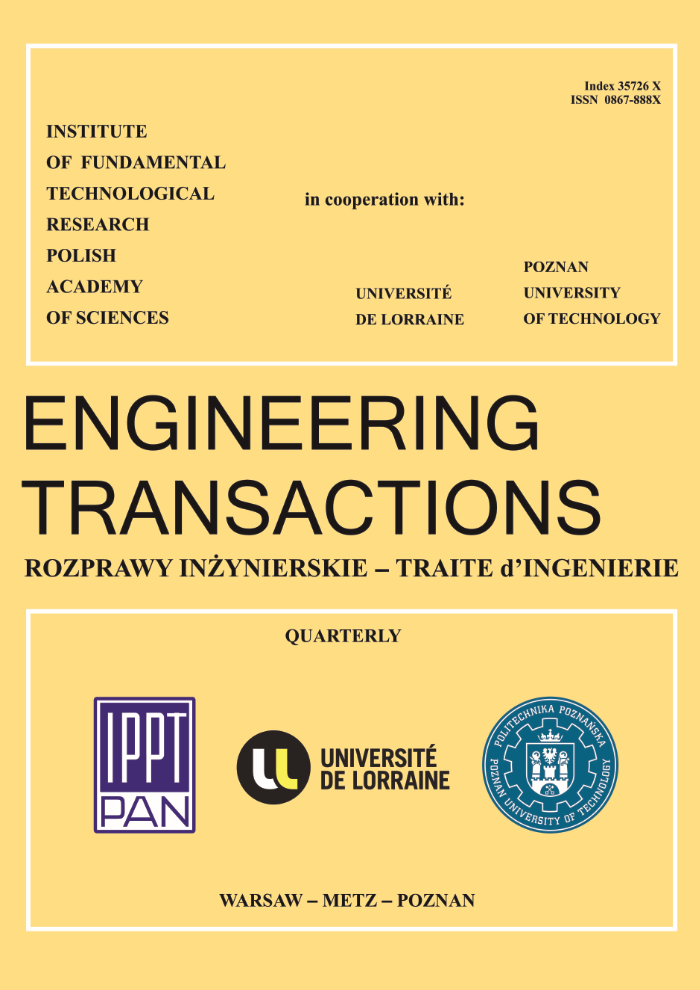Abstract
The main focus is on the hydraulic shock absorbers employed in vehicles, in the context of parameters associated with the damping force control for the given direction of action and with the energy dispersion. Two types of shock absorbers are examined: those with constant and variable parameters of damping force adjustment. Shock absorbers that were subject to research investigations included a commercially — available shock absorber with fixed parameters and an experimental absorber with variable parameters. The paper summarises the problems experienced during modelling of hydraulic shock absorbers when the equivalent damping ratio is sought. Damper properties and the methods of determining them are outlined. The laboratory tests performed on these shock absorbers are considered in more detail and relevant characteristics are provided for the sake of comparison. The reasons why shock absorbers with fixed parameters have been in widespread use for many years are now investigated, highlighting the aspects which prompt the research work on shock absorbers with variable parameters.Keywords:
hydraulic damper, energy dispersed, semiactive vibration controlReferences
1. Schiehlen W. And Hu B., Spectral simulation and shock absorber identification, International Journal of Non-Linear Mechanics, 38, 161–171, 2003.
2. Liu Y. and Zhang J., Nonlinear dynamic responses of twin-tube hydraulic shock absorber, Mechanics Research Communications, 29, 359–365, 2002.
3. Mitschke M., Dynamik der Kraftfahrzeuge: Schwingungen, Band B, Berlin, Springer, 1984.
4. Basso R., Experimental characterization of damping force in shock absorbers with constant velocity excitation, Vehicle System Dynamics, 30, 431–442, 1998.
5. Konieczny J., Ornacki R. and Pluta J., Stand used to testing systems of vibration control [in Polish], Miesiecznik – Napędy i Sterowanie – Racibórz, 5, 12–15, 1999.
6. McConnell K.G., Vibration testing – Theory and practice, Wiley, New York 1995.
7. Konieczny J., Kowal J., Pluta J. And Podsiadlo A., Experimental testing and simulation of hydraulic shock absorber, Journal of Measurement Automatic and Control – PAK, 1, 45–48, 2004.
2. Liu Y. and Zhang J., Nonlinear dynamic responses of twin-tube hydraulic shock absorber, Mechanics Research Communications, 29, 359–365, 2002.
3. Mitschke M., Dynamik der Kraftfahrzeuge: Schwingungen, Band B, Berlin, Springer, 1984.
4. Basso R., Experimental characterization of damping force in shock absorbers with constant velocity excitation, Vehicle System Dynamics, 30, 431–442, 1998.
5. Konieczny J., Ornacki R. and Pluta J., Stand used to testing systems of vibration control [in Polish], Miesiecznik – Napędy i Sterowanie – Racibórz, 5, 12–15, 1999.
6. McConnell K.G., Vibration testing – Theory and practice, Wiley, New York 1995.
7. Konieczny J., Kowal J., Pluta J. And Podsiadlo A., Experimental testing and simulation of hydraulic shock absorber, Journal of Measurement Automatic and Control – PAK, 1, 45–48, 2004.






